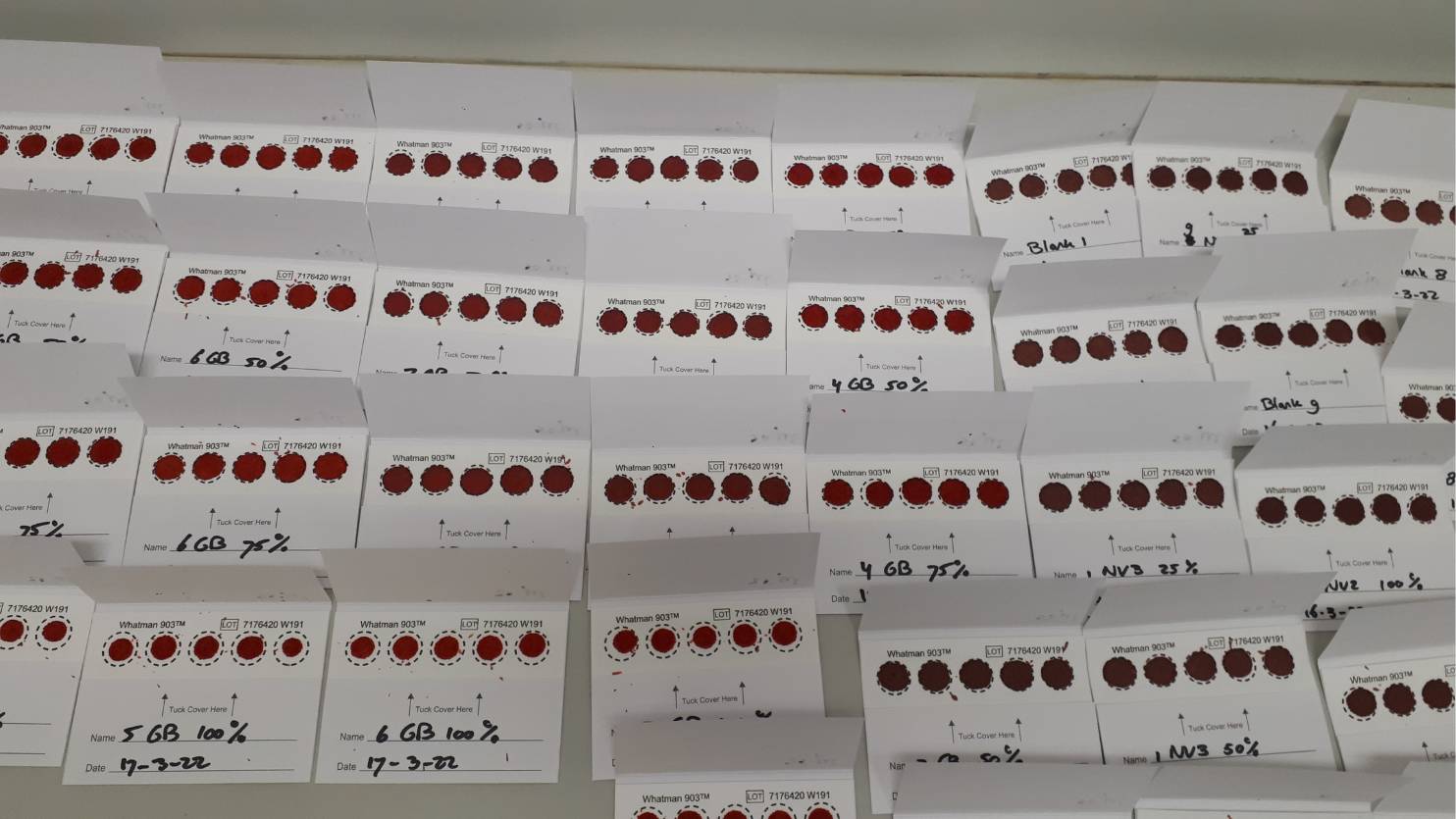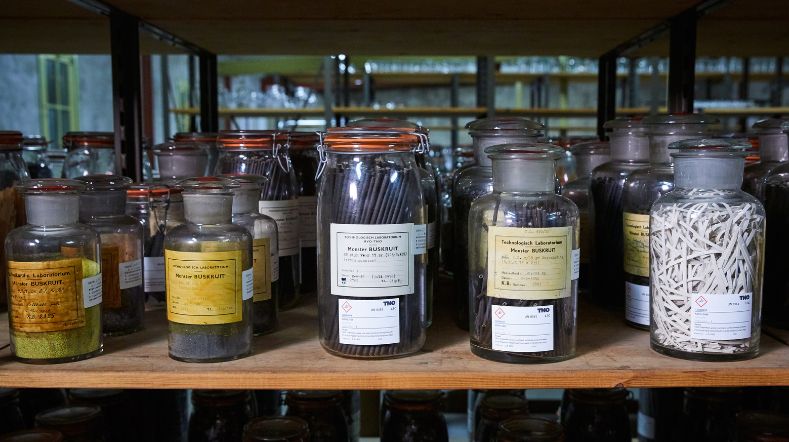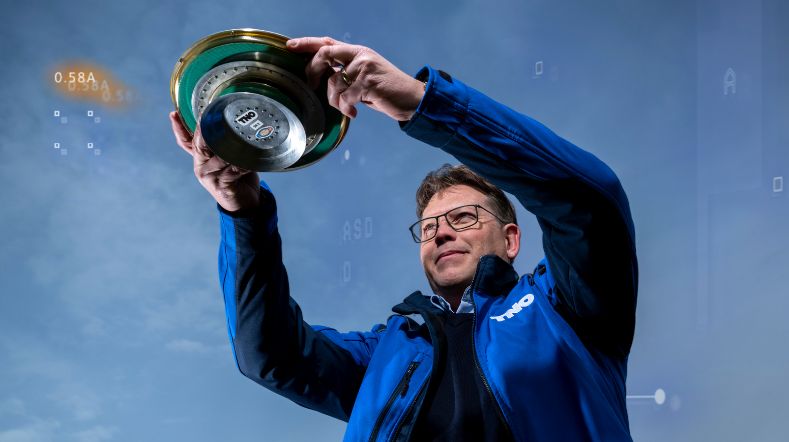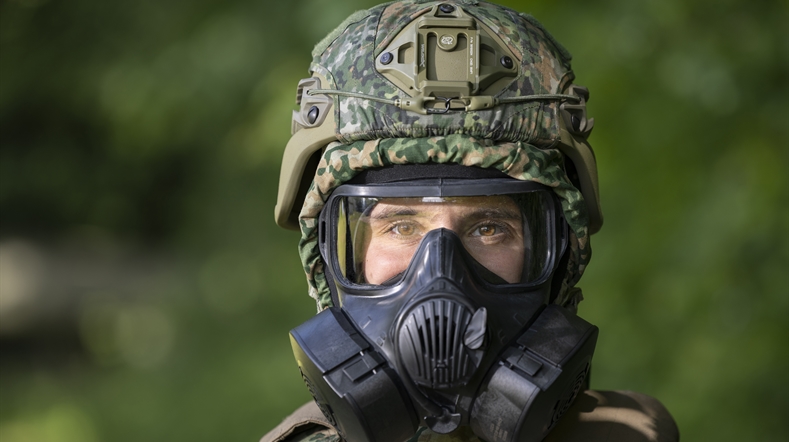
New forensic research reveals chemical weapons 'fingerprint'
In military conflicts and terrorism, parties may use toxic substances to make weapons, in spite of international treaties. The poisoning of Sergei Skripal and Alexei Navalny, and suspicions of chemical attacks in Ukraine, highlight the continuing risk of the use of chemical weapons. When chemical weapons are suspected to have been used, forensic investigation is needed to determine whether the suspicion is correct and, if so, what chemical substance was used. This is essential for providing appropriate care to victims and protecting the safety of emergency workers.
Until recently, forensic investigation of chemical weapons was in its infancy. Encouraging research into new and better ways of conducting forensic investigation in this field is one of the aims of the Organisation for the Prohibition of Chemical Weapons (OPCW). In the international research field, TNO is one of the laboratories the OPCW works with.
TNO forensic researcher Mirjam de Bruin-Hoegée will soon defend her thesis entitled 'Revealing the origin of chemical weapons'. She explains: "In the event of an attack with a chemical weapon, an investigation is carried out to find out what substance was used. This is important in particular to quickly get people to safety, take protective measures, and provide appropriate medical assistance. But immediately after that comes the question: “who did it?” This is the question I focused on in my research.
For the FACING (Forensic Attribution for CWA INtelliGence) partnership, I developed several new methods that help identify the origin of chemical weapons. Collecting more different types of evidence and linking them makes it more likely that this will enable judicial identification of the perpetrator."
To date, only a limited number of laboratory studies have been conducted to match chemical warfare agents or chemical threats with their starting materials, due to technical difficulties involved and the lack of suitable forensic methods.
The aim of the PhD project on Forensic Attribution for CWA INtelliGence (FACING) is to develop forensic investigation methods that can be applied to a wide range of chemical warfare agents and related compounds, and to use the investigations to obtain more forensic information to support national or military intelligence objectives.
FACING is a collaborative venture between the Van 't Hoff Institute for Molecular Sciences (HIMS) of the University of Amsterdam and TNO Defence and Security. The FACING project is funded by the AIO fund of the Dutch Ministry of Defence.
How to determine the origin of a chemical weapon
"To find out which party deployed the chemical weapons, we’re looking for a kind of fingerprint that is unique to each weapon. We create that 'fingerprint' by combining different research methods," says De Bruin-Hoegée. "First, we examine the chemical substance used in the weapon. For example, the chemical consists of 90% poison and 10% by-product such as pollution or a surplus of one of the original raw materials. Analysing that 10% can give us a lot of information about, for example, where and how the poison was made and how long it was stored.
If you have a jerry can full of the stuff, then analysis is comparatively easy. However, in real life you don’t have that luxury. In a chemical weapons attack, the chemical is spread over a large area. Moreover, time passes before investigators are on site. The major challenge in the investigation lies in the fact that the substances are found on site in extremely low concentrations and are also highly reactive, degrade rapidly in the environment, or metabolise in the human body. This makes unambiguous identification very complicated.
With newly developed, highly sensitive analytical techniques, this can now be done. Even with especially small concentrations found in human blood samples and plants exposed to the chemical in our laboratory, we can now establish the necessary data from that 10% of by-product and determine the 'fingerprint'."

Further determining the offender profile
"To establish the profile of the perpetrator of the chemical attack even more specifically, we’ve also developed new methods to determine what the bomb – the 'bringer' of the chemical – is made of," says De Bruin-Hoegée. "A piece of plastic from a drone, a piece of duct tape or insulation tape, remnants of a PVC pipe: each has its own minimally deviating factory properties that we can now identify in order to add another piece to the puzzle of the perpetrator’s profile."
International collaboration
"The new analytical methods have now been developed and should prove their value in practice in the future," De Bruin-Hoegée concludes. "To use them successfully, several follow-up steps are still needed, such as establishing and expanding an international database of properties of substances and materials potentially used in chemical weapons attacks. Fortunately, we don’t have to do this alone, as there’s a lot of international collaboration in this area. The hope is that the ability to clearly identify the perpetrator will deter potential offenders. The goal of my research is thus ultimately to contribute to a safer world."
Want to know more on this topic
Please contact Mirjam de Bruin- Hoegée.
Get inspired
TNO in the media 2025


Why continuous knowledge development is crucial in munitions safety


Christa Hooijer appointed as Chief Scientist of TNO

Time setter story: Project manager Christian Trampuz


From CBRN laboratory to battlefield: International field trials with gas masks


